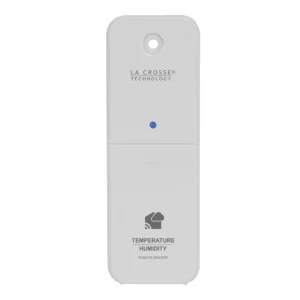
1. Enhanced Patient Care
Applied Medical Technology integration of applied medical technology leads to improved diagnostic accuracy, enabling healthcare professionals to make informed decisions rapidly. Technologies like AI-assisted imaging can help radiologists identify abnormalities more efficiently, reducing the likelihood of missed diagnoses and enhancing patient safety.
2. Increased Efficiency
Automated systems and digital tools streamline administrative processes, allowing healthcare providers to devote more time to patient care. For example, automated appointment scheduling and billing systems minimize errors and reduce wait times, contributing to a more efficient healthcare environment.
3. Improved Access to Care
Telemedicine and mobile health applications have significantly broadened access to healthcare services. Patients living in remote or underserved areas can consult with specialists and receive care without the burden of long travel distances. This has been particularly beneficial for managing chronic conditions, as patients can receive regular check-ins and adjustments to their treatment plans without needing to visit healthcare facilities.
4. Better Patient Outcomes
Advanced treatment technologies contribute to fewer complications and improved recovery rates. For instance, minimally invasive surgical techniques are associated with reduced blood loss and shorter recovery times. Furthermore, personalized medicine, which tailors treatments to individual genetic profiles, enhances the efficacy of therapies, reducing side effects and improving overall treatment outcomes.
Challenges in Implementing Applied Medical Technology
1. Cost
One of the significant barriers to implementing applied medical technology is the high cost associated with purchasing and maintaining advanced equipment and systems. Healthcare facilities, especially those in low-income areas or rural settings, may struggle to afford these technologies. Cost-benefit analyses must be conducted to justify investments in new technologies, balancing the initial expenditure with long-term gains in efficiency and patient outcomes.
2. Data Privacy and Security
As healthcare becomes increasingly digital, the risk of data breaches and cyberattacks poses significant concerns. Protecting patient information is paramount, and healthcare organizations must invest in robust cybersecurity measures to safeguard sensitive data. Compliance with regulations such as the Health Insurance Portability and Accountability Act (HIPAA) is essential to maintain patient trust and confidentiality.
3. Integration Issues
Integrating new technologies with existing healthcare systems can be challenging. Interoperability—the ability of different systems to communicate effectively—is crucial for seamless data exchange. Healthcare organizations must prioritize investing in technologies that adhere to interoperability standards to facilitate cohesive workflows and improve patient care.
4. Resistance to Change
Resistance to adopting new technologies can stem from various factors, including concerns about the learning curve associated with new systems, fear of job displacement, or skepticism regarding the efficacy of new methods. Ongoing training and support are vital to overcoming resistance, ensuring that healthcare professionals feel confident and competent in utilizing new technologies.
Future Directions in Applied Medical Technology
1. Artificial Intelligence and Machine Learning
The future of healthcare is poised to be significantly shaped by advancements in artificial intelligence (AI) and machine learning (ML). These technologies will enhance diagnostic processes, optimize treatment protocols, and improve patient management strategies. Predictive analytics powered by AI can identify at-risk patients, enabling early interventions that can drastically alter health trajectories.

2. Personalized Medicine
The field of personalized medicine is expanding rapidly, driven by advancements in genomics and biotechnology. By leveraging genetic information, healthcare providers can develop tailored treatment plans that account for individual patient characteristics, improving the likelihood of successful outcomes. This approach not only enhances treatment efficacy but also minimizes adverse effects associated with conventional therapies.
3. Robotics in Healthcare
The integration of robotics into healthcare is expected to continue growing, with applications in surgery, rehabilitation, and patient assistance. Robotic systems can enhance surgical precision, leading to better outcomes, while robotic exoskeletons can aid in rehabilitation for patients with mobility impairments. Additionally, robots may play a role in assisting healthcare workers with routine tasks, improving overall efficiency.
4. Virtual Reality (VR) and Augmented Reality (AR)
Virtual reality (VR) and augmented reality (AR) are emerging as innovative tools for medical education and patient care. VR can simulate real-life medical scenarios, providing students and professionals with immersive training experiences that enhance their skills. In patient care, AR can assist surgeons during procedures by overlaying vital information onto their field of view, improving accuracy and outcomes.
Conclusion
Applied medical technology is reshaping the healthcare landscape, offering innovative solutions that enhance patient care, improve operational efficiency, and drive better health outcomes. As we navigate the challenges associated with implementation, it is crucial to foster an environment that encourages innovation while ensuring that technologies are accessible, secure, and effectively integrated into healthcare systems. The future of healthcare is undoubtedly intertwined with technological advancements, and continued investment in these innovations will pave the way for a more effective and equitable healthcare system, ultimately benefiting patients and providers alike. Through collaboration among stakeholders, ongoing education, and a commitment to ethical practices, the potential of applied medical technology can be fully realized, leading to a healthier future for all.For more detail please visit techwebinsights.com







